LEGO Ideas: Machu Picchu, by Diego Baca
In this exclusive article, we share highlights from building the model, and interview the designer to learn more about designing great LEGO models and promoting your project on LEGO Ideas. With nearly 10,000 votes, it could become an official LEGO set!
LEGO artist Diego Baca captured this globally recognized heritage site in a striking LEGO model which he submitted to LEGO Ideas. In addition to building the model digitally and ordering the parts to build it with real LEGO bricks, Diego leveraged his design background to create beautiful building instructions in the style of the offical LEGO Architecture sets.
He even got the instruction book and a matching box professional printed, resulting in the one-of-a-kind hand packed LEGO set that I had the unique opportunity to build for this article.
After the following in-depth look at the build process, be sure to read our exclusive interview with Diego explaining why he decided to focus on this landmark, challenges in designing the model, and his experiences sharing this project on the LEGO Ideas website.
Machu Picchu, by Diego Baca
- Date submitted to LEGO Ideas: June 18, 2017
- Availability: Not available for purchase
- Building instructions: Download link
- Piece count: 657 pieces
The Model
With a beautifully designed instruction book and custom box, I approached the build process the same as official sets in the LEGO Architecture series. The build process has three distinct stages which we will explore: building the base, building the city, and building the mountain.
The base
As with most models in the LEGO Architecture series, the first step is to build the base. Typically, the base is comprised of one layer of large plates, which are connected using long 2x plates attached below, with the signature border of 1x black tiles. This model is slightly over-engineered, with two layers of large plates instead of one. This makes for a more stable base, which I appreciated. I also appreciated the 1x black tile border, and the custom-printed tile with “Machu Picchu” in matching white lettering.
The subsequent layer adds additional green plates, and five areas with a mix of green tiles and 2×2 jumpers. The reason for the jumpers was not immediately apparent so I pressed, on adding several layers of bricks and plates representing the terraces and a few buildings.
The buildings
The reason why five sections of the model are left blank with just a few exposed 2×2 jumpers became obvious when I learned that each of these areas focuses on a different group of buildings in the overall complex. The first section we build is a 4×6 sub-assembly featuring the “Temple of the Condor”, which attaches to the front-right corner of the base.
The choice to build sections of the complex as sub-assemblies immediately resonated with me… By building one assembly at a time, Diego teaches us about the distinct roles of each area of the complex. The corresponding instruction booklet includes a photo of the real temple, and an explanation that “A natural rock formation began to take shape millions of years ago and the Inca skillfully shaped the rock into the outspread wings of a condor in Flight.”
The construction continues with sub-assemblies dedicated to the Residential District, Intihuatana, Central Plaza, and Temple of the Sun & Torreón. The model relies heavily on a few relatively uncommon LEGO elements to re-create the buildings and foundations: the 1×2 masonry brick in 138Sand YellowDark Tan, and a mix of 1×1, 1×2, and 2×2 Corner Panels in 5Brick YellowTan. It’s a simple technique that works extremely well at this small scale.
The only two official LEGO Architecture sets that use removeable sub-assemblies are #21005 Fallingwater, and #21037 LEGO House. I think it would be easy to modify the design to make them fully removeable too.
It’s worth pausing to appreciate the brick-built Llama which appears in the Central Plaza. It’s an great looking tiny model using just seven LEGO pieces. I am obliged to point out that the Llama is way to large given the small scale of the model, but I tend to agree with Diego that this tradeoff is worth it to add personality to the model. (He also pointed out that the car and bus in #21029 Buckingham Palace are also too large compared to the building.)
The mountain
The building process concludes with a brick-built re-creation of Huayna Picchu, the picturesque mountain which appears behind Machu Picchu in most photos. This is the least fun section of the build process, but I was pleased how well it captures a natural landscape using angular plastic bricks.
Conclusion
I was really impressed by how good the finished model looks, and how smoothly the build process went. I especially enjoyed how much care went into teaching people about the site as they built the various buildings. Assembling and attaching the five sub-assemblies was the highlight of the build process.
While the building instructions were better designed and easier to follow than any other custom LEGO set I’ve ever built, there are a few places where the model and its instructions could be improved. The building instructions would be even easier to follow if the orientation of the model changed less frequently. (There were several cases where you rotated the model just to add a couple pieces, then rotate it back. Official LEGO sets keep rotation to a minimum as it breaks up the flow.)
I also wish that the sub-assemblies could be removed easily after completing the model. Unfortunately a few extra parts are added after connecting the sub-assemblies to the base, making it more difficult to remove them later. This is a missed opportunity, as it is fun to be able to remove them later, and show others about the distinct areas of the complex.
Admittedly, these are minor quibbles about an excellent custom LEGO set. It matches the attention to detail of most official sets in the LEGO Architecture series, and would appeal to a wide audience.
Interview with LEGO Artist Diego Baca
In addition to allowing me to build the latest version of his beautiful LEGO Ideas submission, Diego generously offered to answer some questions about the project.
Introduction
Diego Baca: As a Peruvian it was one of my motivations, I feel very lucky to have the opportunity to represent my country in LEGO form. I would also add that I LOVE Machu Picchu, I have been fortunate enough to have visited several times and it is an amazing place full of history, excitement and wonder. If you have not visited yet I highly recommend adding it to your list of places to visit.
Brick Architect: Did you plan to submit this project to LEGO ideas before designing the model, or decide later?
Diego Baca: I had been following LEGO Ideas since the early CUUSOO days. Therefore, I knew I wanted to submit something, but I wanted to come up with an idea that I was passionate about. At that same time, I got into the LEGO Architecture theme, and noticed that there are no sets from South America that inspired me to create Machu Picchu and submit it as an idea.
Diego Baca: One of the things I love about the LEGO Architecture sets is the brief history included in the instruction manuals. Typically, they are translated in several languages including the language from the country of origin. I really wanted my model to be a celebration of Peru and its culture and I felt if I only focused on English, I would be excluding many Peruvians. It was super important for me to be inclusive and take as many people along for the ride in an almost two-year journey so far.
Scale
Diego Baca: Scale was a big challenge. I first started with the intention to make a topographically accurate model of Machu Picchu. The more I researched, it became apparent that it would be impossible to recreate Machu Picchu with 100% accuracy if I wanted to stay within the piece limit for LEGO Ideas submissions.
The challenge was to include enough of the mountain (Huayna Picchu) and several features of the city of Machu Picchu without including every landscape detail. Therefore, the final scale was dictated by the iconic Huayna Picchu mountain, I gave myself a 500-700-piece limit (like mid-size LEGO Architecture sets) and worked backwards from there to include as much detail as I could in micro-scale.
Part Selection
Diego Baca: The 1×2 “Brick Brick” is the most used piece with a total of 64 used throughout the model. I picked this part because the Incas who built Machu Picchu were master stonemasons. It is incredible the level of precision the Incas carved stones for their buildings, including Machu Picchu. I wanted to make sure that craft and emphasis for stonemasonry was present in the model.
The different sized corner panels helped me achieve extra details in order to recreate walls and rooms at micro-scale. And lastly, I always feel natural landscape is a challenge to recreate in LEGO, the Huayna Picchu mountain has a total of seven different types of slope parts to help emulate the natural geology of the mountain.
LEGO Color Palette
Diego Baca: When I first designed the model, I used Bricklink Studio CAD software to get started. I could have made the choice to keep the model only as a digital submission, but I really wanted to build the model in real life. Therefore, I forced myself not to have any recolors.
The biggest challenge was the Huayna Picchu mountain slopes… the original submission had the brown mountain because slopes 75 2 x 2 x 3, 65 2 x 1 x 2 and 75 2 x 1 x 3 were not available in a single cohesive green color until 2018 when the Great Wall of China model was released. Overall, I don’t think I needed an extra color, I was happy with the final color palette. I just wish more parts existed in dark green, tan and dark tan. The one part that is top on my wish list is slope 45 2 x 2 Double Convex in dark green.
Diego Baca: Colors played an important role establishing depth in the final model. When I first designed Machu Picchu in Bricklink Studio, I built it entirely in white. I then applied colors section by section and changed parts as needed based on color availability. The first thing I did was to make the whole model green. Even though most people associate green with Machu Picchu there is a lot of color nuance and the model felt very flat when it was mostly one single green color.
The three shades of green help replicate what people typically see on the photographs: the brightly lit green grass of Machu Picchu city due to the sun, the darker green Huayna Picchu mountain casting a shadow on itself, and green from foliage and the jungle.
Architectural Features
Diego Baca: Machu Picchu is a small city not a single building, so I drew inspiration from the LEGO Architecture skyline sets. I love how they tell a story as you build the skyline and LEGO uses that opportunity to inject facts about the culture and history of the city. The Machu Picchu model uses multiple sub-assemblies because it allows me to tour the city section by section showcasing important landmarks across the complex – including the central plaza and its llamas!
Diego Baca: As I mentioned before, I started by trying to build a perfect representation of the whole city but that was too challenging, and I quickly realized that it would require more than the piece limit for LEGO Ideas. I do think the model accurately represents the sections of the city and showcases important key landmarks. In addition, it captures the iconic profile of the Huayna Picchu mountain with the city of Machu Picchu in the foreground.
Relationship to other LEGO sets
Diego Baca: I used the same black plate border as other LEGO Architecture sets because the Architecture theme was my original inspiration for building Machu Picchu. I feel LEGO Architecture sets help you learn about the culture and history of a place while building something fun, hence why I started from that point.
In my latest update, I did change the base of the model to break away from the Architecture theme and try to explore what if the model was about archelogy or exploration—I love the idea of taking the builder through a journey to the past like Indiana Jones in some expedition uncovering the secrets of a lost city.
Diego Baca: I did notice some similarities and loved that they included a few new slopes in dark green that were on my wish list! It felt good to see LEGO expand the Architecture theme horizons to other types of buildings. Machu Picchu and The Great Wall of China have lots of similarities, for example: both are UNESCO World Heritage Sites, both have the landscape play an important role on the architecture, and both are rich with cultural and historical significance.
Promoting the model
Diego Baca: Promoting an Ideas project is a wild ride. I am always humbled and excited at the passion people across the globe have for LEGO. When I first submitted the project to LEGO Ideas, I had no expectation, I knew it is very challenging to reach 10,000 votes – I was happily caught off guard when I uploaded it to Facebook and within hours it went viral.
I remember my mom called me letting me know she has seen my project on TV and in all major news sites in Peru. Going viral is cool but I am especially proud when fellow AFOLs across the globe send me messages of encouragement or have built the model themselves from instructions I posted online, makes me feel awesome.
Diego Baca: Yeah, of course! The box and manual are not part of the official LEGO Ideas submission but being a designer (user experience and graphic designer to be precise) I just had to go the extra mile. I designed the manual using Bricklink Studio and used blurb.com to do the printing and for the box I used Adobe InDesign and packlane.com for the printing.
Diego Baca: I have learned a lot in these past two years, I also have made many new friends along the way. In fact, that’s been my favorite part of the journey. LEGO Ideas is an internet program and like all things internet there can be a lot of negativity and nasty comments. But at the same time, there are so many more passionate people that want to see you succeed and support your ideas. Meeting and talking to the community has helped me keep a positive attitude throughout the process and help me make some great friends. To anyone thinking of putting an idea out there, do it! It is an amazing experience and I have enjoyed every second of it.
Thank you, Tom, for the opportunity to tell my story and leg godt!

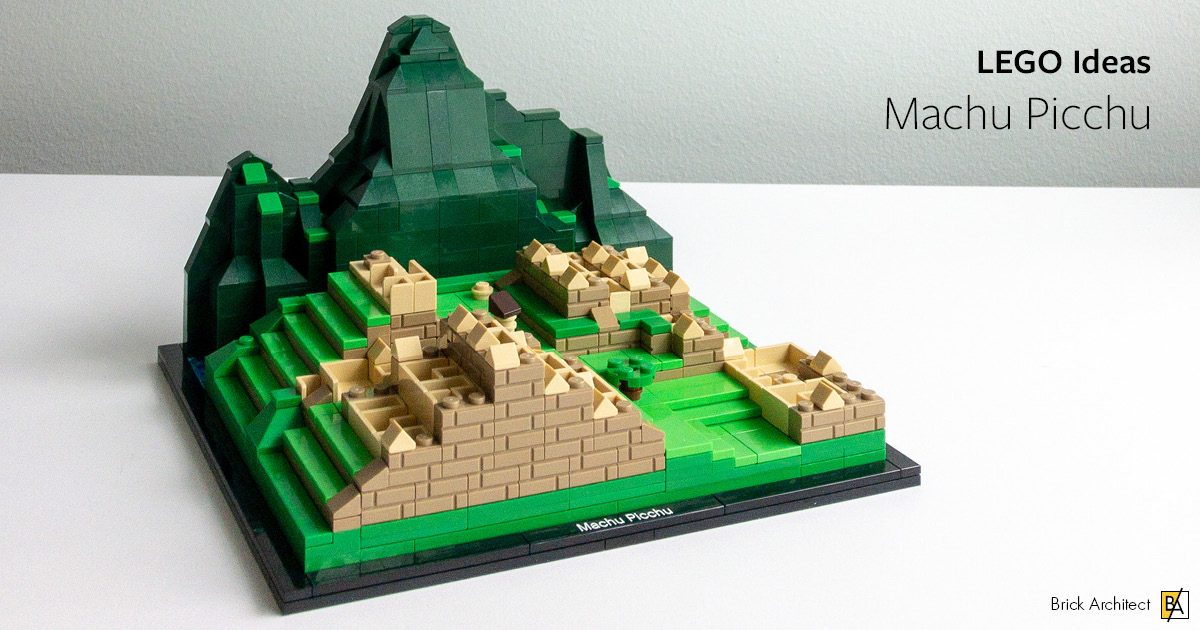

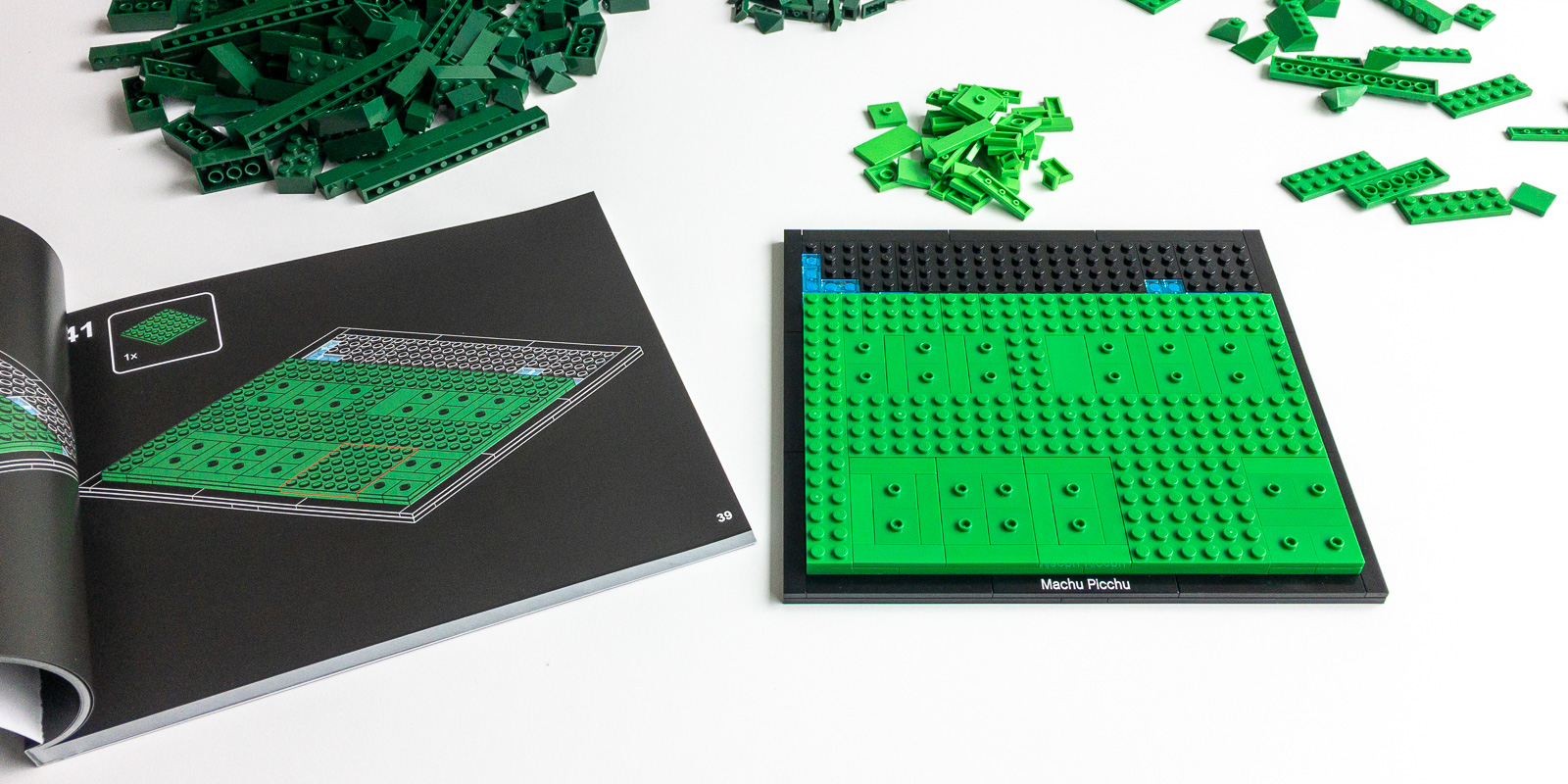
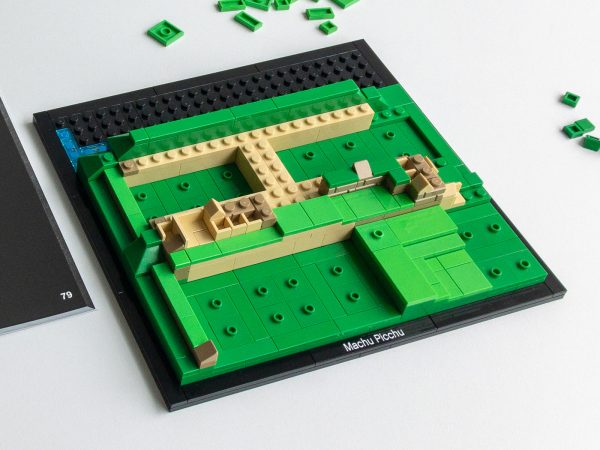
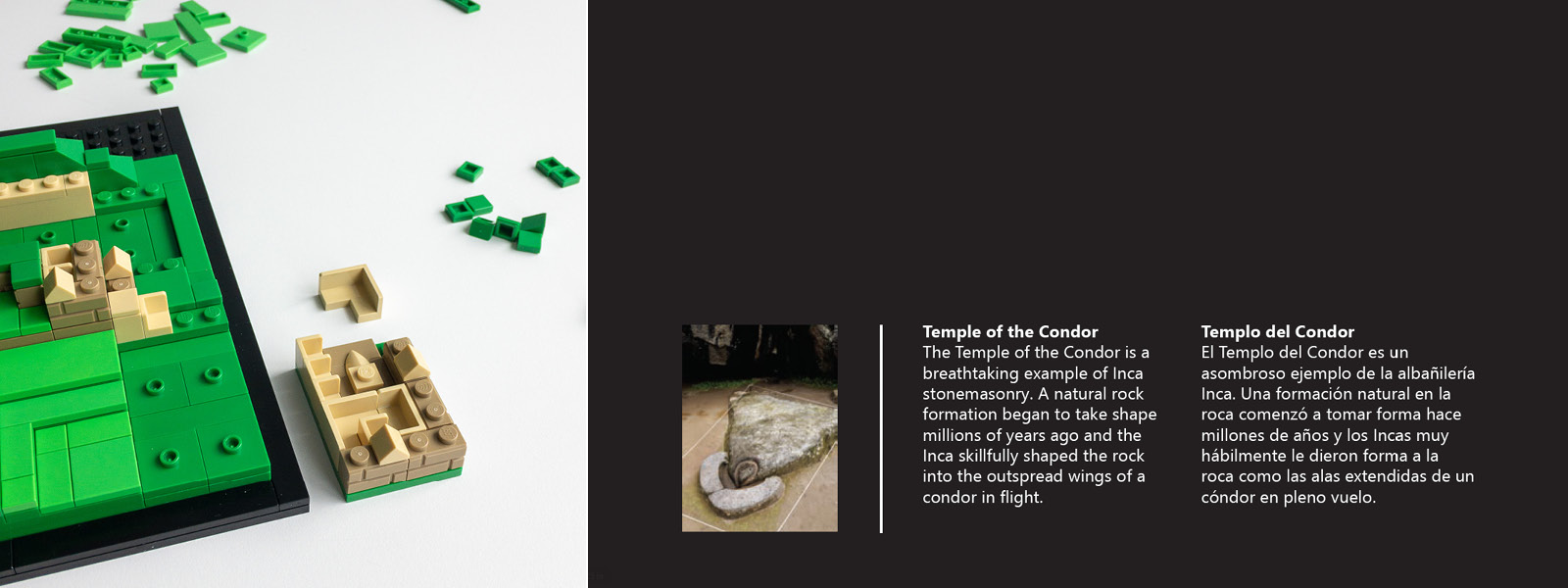
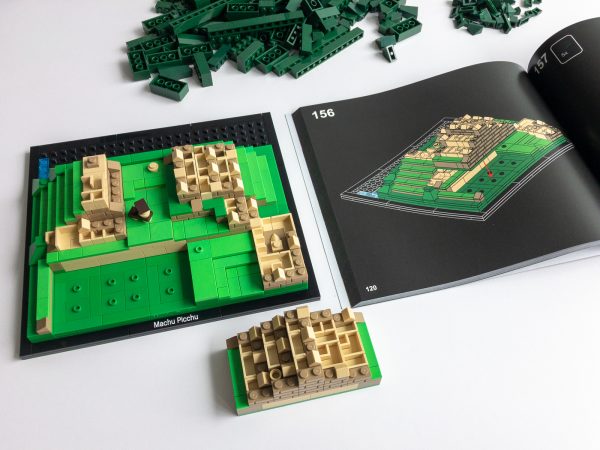
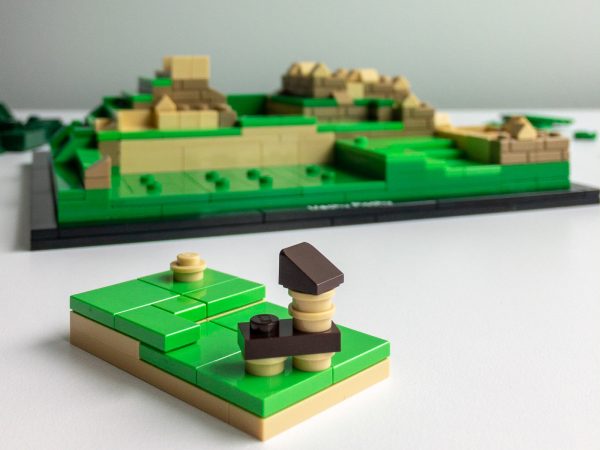
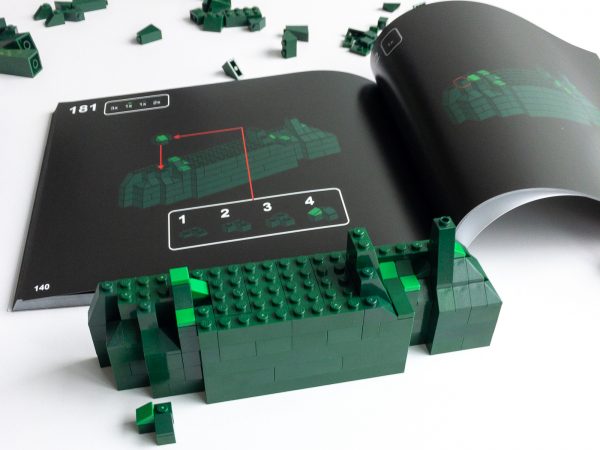
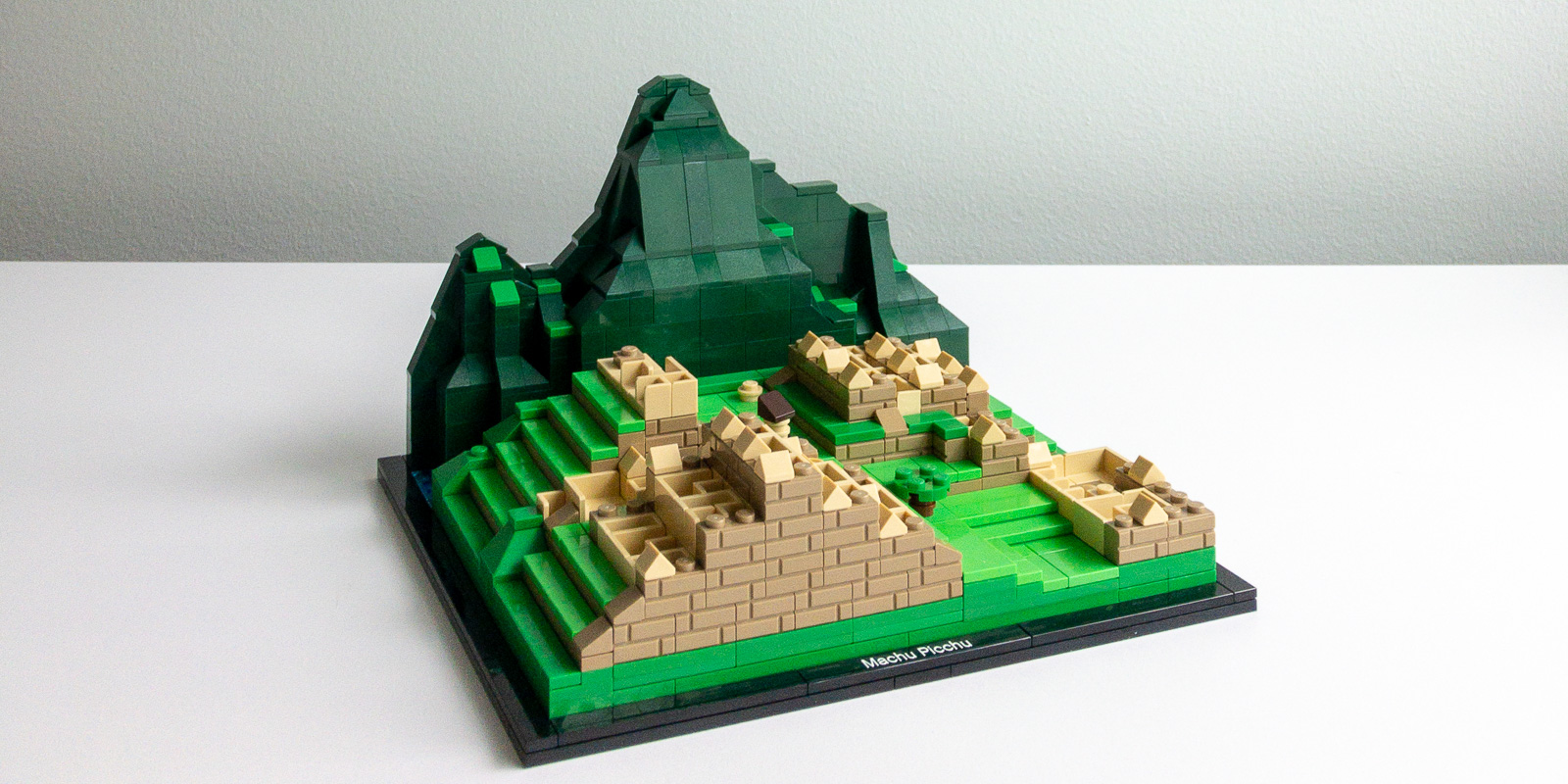

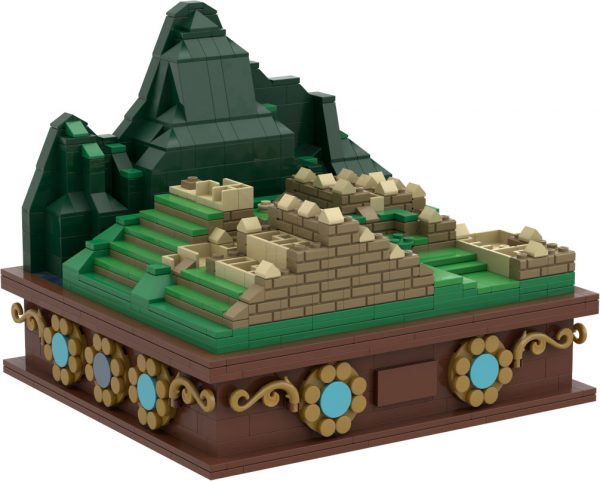
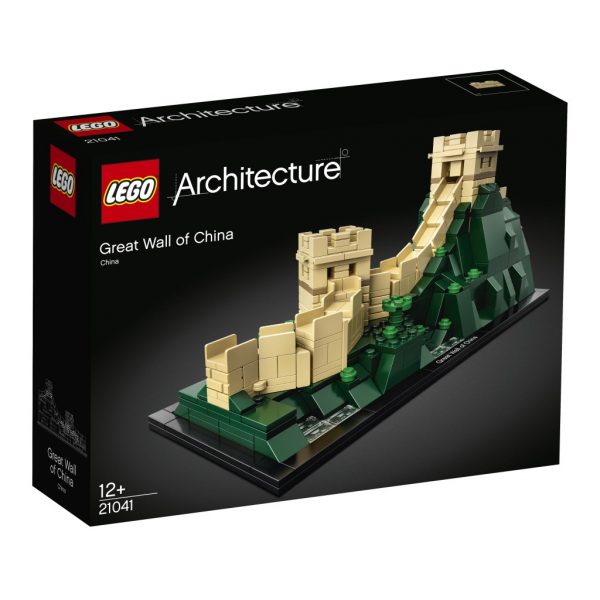
Not a word saying that those 1 x 1 “house” slopes do not exist. On Ideas page they are replaced by cheese slopes.
The “House” slope that you mentioned didn’t exist when he made the initial submission to LEGO Ideas site. Like many other builders, he provided minor updates to the model on the ideas site after the initial submission. As you saw in the photos, the version I built used the newer part.